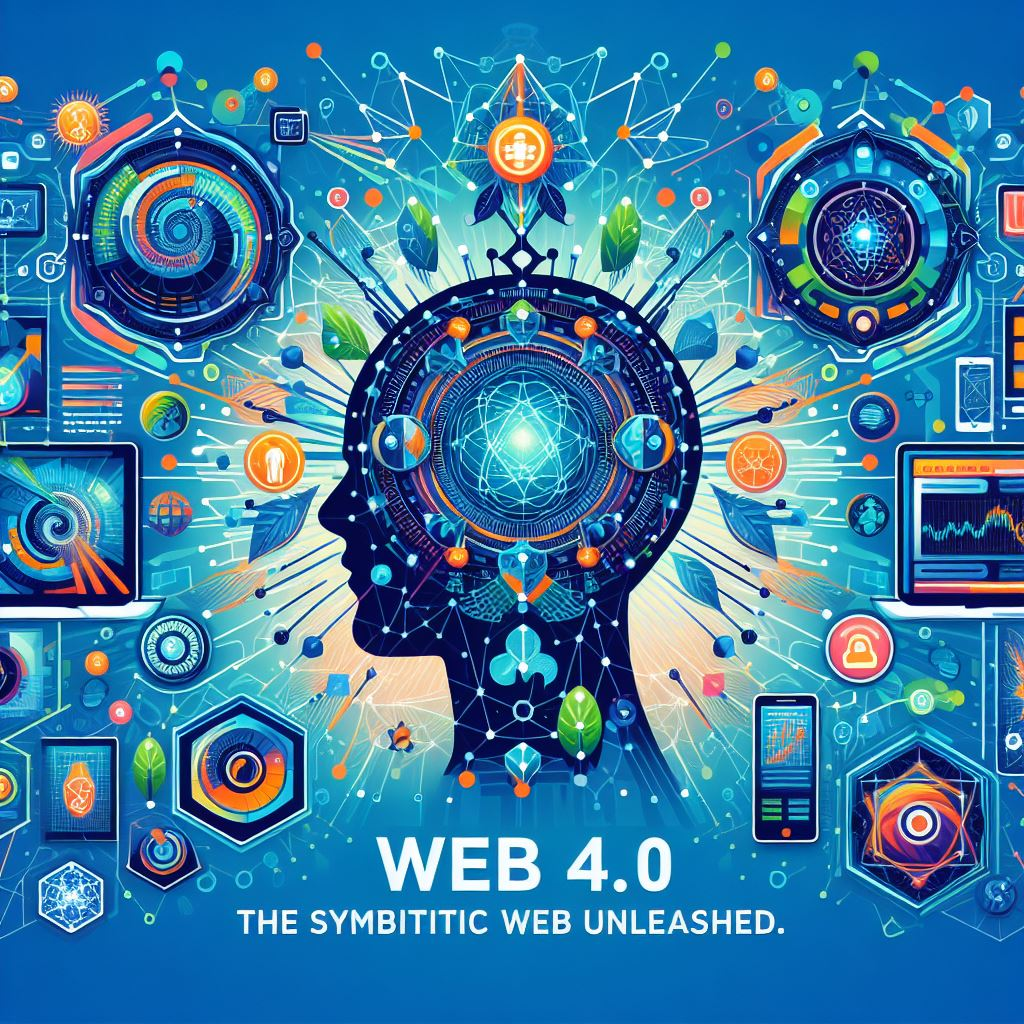Introduction: A New Era Beyond Web3
The internet has never stood still. From the early days of Web1’s static HTML pages to the interactive, social web of Web2, and now to the decentralized, blockchain-powered universe of Web3 — we’ve seen seismic shifts every decade. But what comes next?
Welcome to Web4 — a speculative yet rapidly materializing vision for the next stage of the internet. While Web3 focused on decentralization, data ownership, and blockchain, Web4 is expected to layer on intelligence, presence, and autonomy. Think: AI-powered digital agents, decentralized identity, immersive experiences through spatial web tech, and a seamless blend of physical and digital lives.
In this post, we’ll unpack:
What Web4 means (and why it matters)
The key technologies shaping its future
How it will transform how we live, work, and connect online
Risks, ethics, and open questions
Web Evolution Recap: Web1 to Web3
Before jumping into Web4, let’s quickly recap the journey:
Web1 (1990s–early 2000s): “Read-only” — static websites, no user interactivity, no logins or comments.
Web2 (mid-2000s–2010s): “Read & Write” — rise of social media, e-commerce, mobile, and cloud-based platforms. Users generate content, but big tech controls data.
Web3 (2017–present): “Read, Write & Own” — focus on decentralization, blockchain, NFTs, crypto, DAOs, and user-owned ecosystems.
So where does Web4 fit in?
Defining Web4: What Is It?
Web4 is still a conceptual phase, but it’s being widely described as:
“An intelligent, context-aware, decentralized web powered by AI agents, spatial computing, and identity sovereignty.”
Where Web3 gave users data ownership, Web4 aims to give users autonomy and presence. Web4 could:
Use AI agents to act on your behalf online
Leverage decentralized ID systems to reduce platform dependency
Offer spatial and immersive interactions instead of flat screens
Allow seamless transition across platforms without centralized control
It’s the blend of decentralization, automation, personalization, and immersion.
Core Pillars of Web4
Let’s break down the major components that are likely to shape Web4:
1. Autonomous AI Agents
Instead of manually navigating the web, GPT-like assistants will perform tasks:
Booking flights, managing your schedule
Writing documents, replying to emails
Researching and filtering content based on your preferences
Unlike today’s chatbots, Web4 AI agents will be:
Persistent (they remember your habits)
Personalized (trained on your data)
Decentralized (not owned by any one company)
Think of it as your personal operating system for the web.
2. Decentralized Identity & Sovereign Data
Today, your identity is fragmented across platforms (Facebook, Google, etc.). In Web4:
You’ll have a decentralized ID (DID)
Control what data apps can access and revoke access at will
Avoid logins altogether by using wallet-based authentication
No more endless passwords or worrying about who owns your data.
3. Spatial Web & Mixed Reality
Web4 won’t just live on your screen — it will exist in space:
AR/VR headsets like Apple Vision Pro and Meta Quest will serve as Web4 browsers
Digital layers will overlay real life (e.g., navigation arrows on the street)
Shopping, work, and socializing will happen in immersive environments
Think Metaverse, but smarter, more useful, and interoperable.
4. Interoperability Without Permission
Web4 applications will communicate without relying on closed ecosystems:
Move assets and data freely between platforms
Use one identity across apps
No centralized gatekeepers (like Apple or Meta controlling access)
This is where open protocols, blockchain, and zero-knowledge proofs come into play.
5. Real-Time Personalization and Context Awareness
Web4 systems will adjust based on:
Your location
Your emotional state (via wearables)
Current context (work, leisure, family time)
The goal is a contextually intelligent web — one that adapts to you, not the other way around.
How Web4 Will Impact Different Sectors
1. Commerce & Retail
Personalized AI shopping agents
AR-enhanced product browsing in physical stores
Fully integrated crypto payments and rewards
2. Education
AI tutors that evolve with the student
Virtual reality classrooms with global peers
Learning paths based on cognitive ability, not age
3. Healthcare
Digital twins of patients for diagnostics
Wearables feeding real-time health metrics into AI care plans
Decentralized storage of medical records
4. Work & Productivity
AI coworkers to handle administrative tasks
Collaborative holographic meetings in spatial offices
Automation of end-to-end workflows
5. Media & Content Creation
AI-curated media feeds
Smart contracts for royalties and copyright
Immersive storytelling with generative AI and VR
Web4 vs Web3: Key Differences
| Feature | Web3 | Web4 |
|---|---|---|
| Data Control | Decentralized | User-sovereign, contextual |
| Interaction | Manual (via UI) | Autonomous agents & immersive |
| Experience | Platform-specific | Interoperable, spatial |
| Identity | Wallet-based | Decentralized, unified identity |
| AI Integration | Minimal | Core to operation |
Challenges & Ethical Considerations
As exciting as Web4 sounds, there are hurdles:
AI Privacy: Who trains your personal agent — and on what data?
Data Security: Decentralization doesn’t mean invulnerability.
Digital Divide: Will everyone have access to immersive tech?
Identity Theft: What if your decentralized ID is compromised?
Platform Resistance: Big Tech might resist true interoperability.
Regulation, open standards, and user education will be crucial.
What Needs to Happen for Web4 to Arrive
We’re not there yet — but here’s what we need:
Widespread adoption of decentralized ID and wallets
No-code tools to build and customize AI agents
Affordable spatial computing hardware
Cross-platform collaboration protocols
Open-source AI models for privacy and transparency
It’s a tech stack under construction — but the blueprint is taking shape.
Conclusion: Are You Ready for Web4?
Web4 is not a single product, platform, or protocol — it’s a paradigm shift. It promises an internet where you don’t just read or write, but delegate, experience, and control.
If Web3 was about digital sovereignty, Web4 is about digital autonomy.
The best part? You don’t need to wait a decade. The building blocks — from decentralized identity to GPT-powered agents — are already here. Web4 won’t replace Web3 overnight, but it will grow on top of it, fueled by AI, interoperability, and immersive design.
So the real question isn’t “What will Web4 look like?”
It’s: How will you shape it?





